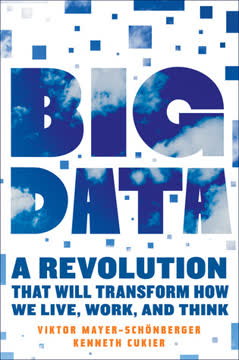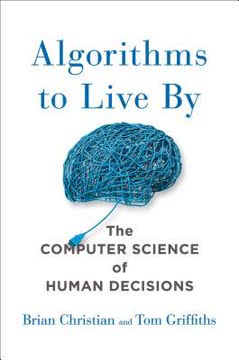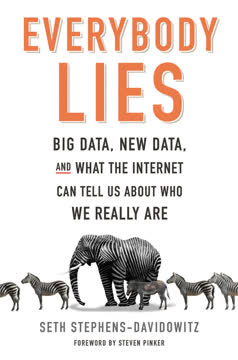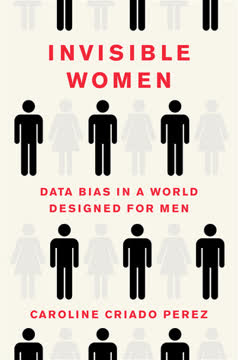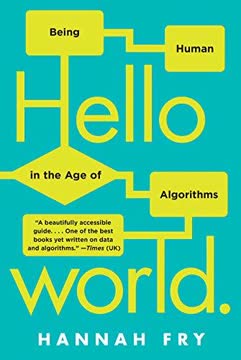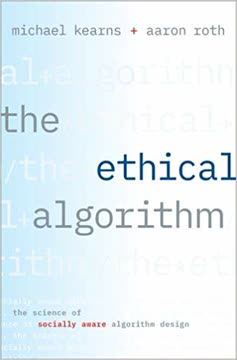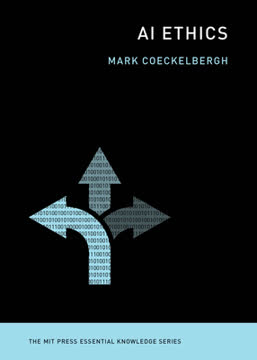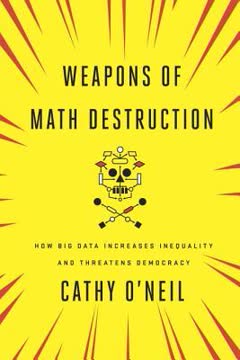重点摘要
1. 大数据算法可能成为数学毁灭武器(WMDs)
“我为这些有害的模型起了个名字:数学毁灭武器,简称WMDs。”
WMDs定义。 数学毁灭武器(WMDs)是指那些可能对个人和社会造成重大伤害的数学模型或算法。这些模型具有三个关键特征:
- 不透明性:模型的内部运作对受影响的人是隐藏的
- 规模:模型影响大量人群
- 破坏性:模型对个人或群体有负面影响
现实影响。 WMDs可以在多个领域中找到,包括:
- 教育(教师评估)
- 刑事司法(再犯预测)
- 金融(信用评分)
- 就业(自动招聘)
- 广告(定向广告)
这些算法虽然常常是出于良好意图创建的,但可能会延续偏见、强化不平等,并在没有适当监督或问责的情况下对人们的生活做出关键决策。
2. WMDs经常惩罚穷人并强化不平等
“在WMDs的世界里,贫穷变得越来越危险和昂贵。”
反馈循环。 WMDs经常创造出恶性反馈循环,尤其影响低收入个人和社区。例如:
- 低信用评分 → 更高的利率 → 更多的债务 → 更低的信用评分
- 生活在高犯罪率地区 → 更多的警察巡逻 → 更多的逮捕 → 更高的犯罪率感知
贫困代理。 许多WMDs使用一些数据点作为贫困的代理,例如:
- 邮政编码
- 教育水平
- 就业历史
这些代理可能导致歧视性结果,即使模型没有明确考虑种族或收入。
有限的申诉途径。 低收入个人往往缺乏资源来挑战或上诉WMDs做出的决定,进一步巩固了他们的劣势地位。
3. 大学排名示范了WMDs如何扭曲整个系统
“《美国新闻与世界报道》的大学排名具有巨大规模,造成广泛的破坏,并产生几乎无尽的破坏性反馈循环。”
意外后果。 《美国新闻与世界报道》的大学排名,虽然旨在为潜在学生提供有用信息,但对高等教育产生了深远且往往有害的影响:
- 大学优先考虑提高排名的因素,而非教育质量
- 更加注重标准化考试成绩和选择性
- 为吸引高分学生而投资设施,导致学费上涨
操纵系统。 一些机构采取不道德的做法来提高排名:
- 虚报数据
- 操纵招生过程
- 鼓励低绩效学生在毕业前转学
强化不平等。 排名系统往往有利于富裕的机构和学生,而不利于资源较少的大学和低收入申请者。
4. 掠夺性营利性大学利用弱势群体
“营利性大学专注于人口中更脆弱的一面。互联网为他们提供了完美的工具。”
定向营销。 营利性大学使用复杂的数据分析来针对弱势个人:
- 低收入社区
- 退伍军人
- 单亲父母
- 失业者
欺骗性做法。 这些机构经常采用误导性策略:
- 夸大的就业率
- 不切实际的薪资预期
- 隐藏的费用和成本
债务负担。 营利性大学的学生往往积累大量债务,却没有获得有价值的证书:
- 学生贷款违约率更高
- 学位可能不被雇主认可
数据驱动的剥削。 营利性大学使用WMDs来:
- 识别最有可能入学的潜在学生
- 优化招生策略
- 最大化每个学生的利润
5. 算法招聘实践可能延续偏见和不公平
“像许多其他WMDs一样,自动系统可以高效且大规模地处理信用评分。但我认为主要原因与利润有关。”
代理歧视。 招聘算法经常使用代理,可能导致歧视性结果:
- 信用评分作为责任感的衡量标准
- 邮政编码作为可靠性的指标
- 社交媒体活动作为工作表现的预测
缺乏背景。 自动系统难以考虑:
- 个人情况
- 成长潜力
- 数据点未捕捉到的独特品质
反馈循环。 算法招聘可以创造自我强化的循环:
- 某些背景的候选人被持续拒绝
- 这些群体变得不太可能申请或获得必要的经验
- 算法“学习”到这些群体不合格
有限的申诉途径。 求职者往往无法知道为什么被拒绝或如何在算法系统中提高机会。
6. 预测性警务和量刑模型加剧种族差异
“即使一个模型是色盲的,其结果却绝非如此。在我们大部分隔离的城市中,地理位置是种族的一个非常有效的代理。”
偏见输入。 预测性警务模型经常依赖历史犯罪数据,这反映了现有的警务实践偏见:
- 对少数族裔社区的过度警务
- 有色人种的逮捕率更高
自我实现的预言。 这些模型可以创造反馈循环:
- 在预测的“高犯罪”地区增加警务 → 更多逮捕 → 数据显示这些地区犯罪更多
量刑差异。 用于量刑的风险评估工具可能延续种族偏见:
- 使用社会经济因素作为风险的代理
- 未能考虑系统性不平等
缺乏透明度。 这些算法的不透明性使得被告或其律师难以挑战评估结果。
7. 定向政治广告威胁民主进程
“我们不能指望自由市场本身来纠正这些错误。”
微定向。 政治竞选使用复杂的数据分析来:
- 识别可说服的选民
- 为特定人群量身定制信息
- 抑制某些群体的投票率
回音室效应。 定向广告可以强化现有信仰并使选民两极分化:
- 向不同选民展示候选人的不同版本
- 限制接触多样化观点
缺乏问责。 定向广告的个性化特性使得:
- 难以追踪虚假或误导性声明
- 难以让竞选活动对其信息负责
数据隐私问题。 竞选活动收集和使用大量个人数据,通常未经选民的知情或同意。
8. 保险和信用评分系统可能造成有害的反馈循环
“随着保险公司对我们的了解越来越多,他们将能够精确定位那些看起来风险最高的客户,然后要么将他们的费率推到天价,要么在合法的情况下拒绝他们的保险。”
个性化风险评估。 保险公司使用越来越详细的数据来评估风险:
- 驾驶习惯(通过远程信息处理设备)
- 生活方式选择(从社交媒体和购买数据)
- 遗传倾向(从DNA测试)
意外后果。 这些系统可能导致:
- 脆弱人群的费率更高
- 对最需要的人拒绝保险
- 激励人们隐藏或歪曲信息
风险分摊的侵蚀。 保险的基本原则(在大群体中分摊风险)在风险高度个性化时被削弱。
信用评分的任务蔓延。 信用评分,最初设计用于贷款决策,现在用于:
- 就业筛选
- 住房申请
- 保险定价
这种扩展使用可能为信用不良者创造不利循环。
9. 工作场所监控和优化算法使工人非人性化
“当数据科学家谈论‘数据质量’时,我们通常指的是数据的数量或清洁度——是否有足够的数据来训练算法?这些数字是否代表我们期望的内容,还是随机的?但在这种情况下,我们没有数据质量问题;数据是可用的,而且实际上是充足的。只是数据是错误的。”
效率的代价。 工作场所优化算法优先考虑:
- 最大生产力
- 最小化劳动力成本
- 可预测的人员配置
人类影响。 这些系统往往忽视:
- 工人福祉
- 工作与生活的平衡
- 工作满意度
监控蔓延。 对员工的监控增加可能导致:
- 压力和焦虑
- 缺乏自主权
- 隐私的侵蚀
算法管理。 工人越来越多地向自动系统而非人类经理汇报,导致:
- 政策僵化
- 决策缺乏背景
- 难以处理独特情况或个人需求
10. 透明度和问责制对于算法的伦理使用至关重要
“要解除WMDs的武装,我们还需要衡量其影响并进行算法审计。”
算法审计。 对算法系统的定期评估应:
- 评估公平性和偏见
- 测试意外后果
- 确保符合法律和伦理标准
可解释的AI。 应努力开发能够:
- 提供清晰决策解释的算法
- 允许人类监督和干预
数据透明度。 个人应有权:
- 访问关于他们的数据
- 纠正数据中的不准确之处
- 了解他们的数据如何被使用
监管框架。 制定法律和指南以管理算法决策在敏感领域的使用,如:
- 就业
- 刑事司法
- 金融服务
- 医疗保健
11. 我们必须将人类价值观嵌入算法系统
“我们必须明确地将更好的价值观嵌入我们的算法中,创建遵循我们伦理领导的大数据模型。有时这意味着将公平置于利润之上。”
伦理设计。 算法设计应考虑:
- 公平和非歧视
- 透明度和问责制
- 隐私保护
- 人权
多样化视角。 在算法系统的开发和实施中包括广泛的声音:
- 伦理学家
- 社会科学家
- 社区代表
- 受算法影响的人
持续评估。 定期评估算法系统对:
- 个人权利和自由
- 社会公平
- 民主进程的影响
教育和意识。 提高以下群体对算法决策的数字素养和理解:
- 政策制定者
- 商业领袖
- 普通公众
通过优先考虑这些伦理考量,我们可以在利用大数据和算法的力量的同时,减轻其潜在的危害,确保它们服务于社会的更广泛利益。
最后更新日期:
FAQ
What's Weapons of Math Destruction about?
- Focus on Algorithms: The book examines how algorithms and mathematical models are used in decision-making processes that impact people's lives, often negatively.
- Concept of WMDs: Cathy O'Neil introduces "Weapons of Math Destruction" (WMDs) as algorithms that are opaque, unregulated, and harmful, reinforcing biases and inequalities.
- Real-World Examples: It provides case studies from sectors like education, criminal justice, and employment to illustrate the detrimental effects of these algorithms.
Why should I read Weapons of Math Destruction?
- Understanding Big Data's Impact: The book helps readers grasp the influence of big data and algorithms on modern society, highlighting their potential to undermine democracy and fairness.
- Awareness of Bias: It encourages critical evaluation of algorithms that affect daily life, from job applications to credit scores, emphasizing the importance of recognizing embedded biases.
- Call to Action: O'Neil urges readers to advocate for transparency and accountability in algorithm use, stressing the need for ethical considerations in data science and policy-making.
What are the key takeaways of Weapons of Math Destruction?
- WMD Characteristics: WMDs are defined by their opacity, scalability, and damaging effects, allowing them to operate without accountability and disproportionately affect disadvantaged groups.
- Feedback Loops: The book discusses how WMDs create self-reinforcing feedback loops that perpetuate inequality, using biased data to make decisions that entrench those biases.
- Need for Reform: O'Neil calls for reform in algorithm development and use, emphasizing fairness and transparency, and advocating for ethical data practices.
What are the best quotes from Weapons of Math Destruction and what do they mean?
- “Models are opinions embedded in mathematics.”: This quote highlights that mathematical models reflect the biases and assumptions of their creators, stressing the need to scrutinize data-driven decisions.
- “The most dangerous [algorithms] are also the most secretive.”: O'Neil warns about the risks of relying on opaque systems without understanding their workings, emphasizing the need for transparency.
- “WMDs tend to punish the poor.”: This statement underscores the disproportionate harm algorithms cause to marginalized communities, highlighting the social justice implications of data-driven policies.
What is a "Weapon of Math Destruction" (WMD) according to Cathy O'Neil?
- Definition of WMD: A WMD is an algorithm that is opaque, unregulated, and harmful, often operating without accountability and perpetuating existing inequalities.
- Characteristics of WMDs: They are opaque (difficult to understand), scalable (affecting large populations), and damaging (causing harm to individuals and communities).
- Examples of WMDs: The book cites algorithms in hiring, credit scoring, and predictive policing as examples of WMDs leading to unjust outcomes for vulnerable populations.
How do WMDs create feedback loops?
- Self-Reinforcing Mechanisms: WMDs generate data that reinforces their conclusions, creating cycles of harm, such as biased hiring practices leading to more biased data.
- Impact on Individuals: Affected individuals may find themselves trapped in cycles of disadvantage, with models penalizing them based on flawed assumptions.
- Examples in Society: Feedback loops are prevalent in sectors like education and criminal justice, exacerbating inequalities and making it difficult for individuals to escape their circumstances.
What role does bias play in WMDs?
- Embedded Bias: Biases are often embedded in the data used to train algorithms, leading to unfair outcomes and perpetuating societal prejudices.
- Consequences of Bias: Bias in WMDs can result in discriminatory practices in hiring, lending, and law enforcement, disproportionately affecting marginalized groups.
- Need for Awareness: Recognizing bias in algorithms is crucial for advocating fairer practices, emphasizing transparency and accountability in data-driven decision-making.
How does Weapons of Math Destruction address the education system?
- Teacher Evaluations: O'Neil discusses value-added models in teacher evaluations, which can lead to the firing of effective teachers based on flawed data.
- Impact on Students: WMDs in education can harm students by removing qualified teachers and perpetuating inequities in underfunded schools.
- Call for Reform: The book advocates for reevaluating educational data use, emphasizing models that prioritize student outcomes and fairness.
What are the implications of WMDs in the criminal justice system?
- Predictive Policing: Algorithms in predictive policing often target marginalized communities based on historical crime data, leading to over-policing and systemic biases.
- Recidivism Models: Recidivism models can unfairly penalize individuals based on backgrounds, perpetuating cycles of incarceration with biased data.
- Need for Ethical Considerations: O'Neil stresses the importance of ethical considerations in algorithm development and implementation in the justice system.
How does Weapons of Math Destruction illustrate the concept of feedback loops?
- Cycle of Inequality: WMDs create feedback loops that reinforce existing inequalities, such as low credit scores leading to higher costs and perpetuating poverty.
- Education and Employment: Flawed evaluation models can lead to job losses for teachers, affecting their ability to support students effectively.
- Criminal Justice: Biased algorithms can lead to harsher sentences, further entrenching individuals in cycles of crime and poverty.
What solutions does Cathy O'Neil propose for addressing WMDs?
- Regulatory Frameworks: O'Neil advocates for regulations governing algorithm use, ensuring fairness and accountability similar to other industries.
- Transparency and Audits: The book emphasizes the need for transparency in algorithmic processes and regular audits to assess their impact on populations.
- Public Awareness and Advocacy: O'Neil encourages readers to become informed about algorithms affecting their lives and to advocate for equitable changes.
What is the significance of the term "Simpson's Paradox" in Weapons of Math Destruction?
- Statistical Misinterpretation: Simpson's Paradox illustrates how aggregated data can present misleading pictures, masking true trends within subgroups.
- Example in Education: The book references the A Nation at Risk report's misinterpretation of SAT scores, leading to flawed conclusions about educational quality.
- Implications for Policy: This concept underscores the importance of disaggregating data to understand real issues, particularly when crafting policies affecting vulnerable populations.
评论
数学毁灭武器揭示了大数据算法的阴暗面,强调了它们如何强化不平等和偏见。尽管一些人称赞奥尼尔的写作通俗易懂且信息重要,但也有人认为她的论点过于简化。书中涉及了算法影响生活的各个领域,从教育到刑事司法。读者们欣赏奥尼尔的专业知识和及时见解,尽管有些人希望看到更多的技术深度。总体而言,这本书引发了关于数据驱动决策在现代社会中的伦理影响的重要讨论。
Similar Books
